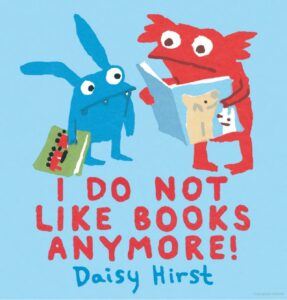 As your child transitions into independent learning and reading, you might notice that they’re what we librarians call a “reluctant reader.”
As your child transitions into independent learning and reading, you might notice that they’re what we librarians call a “reluctant reader.”
There are so many reasons that someone might be a reluctant reader. Reading is intimidating, especially when it’s new to you. If someone experiences reading impairments, reading can feel impossible. Reading impairments can be anything from dyslexia to vision impairment—anything that makes reading difficult. Some people don’t have the attention spans to sit and read a book, and some would rather be playing sports or video games, cooking and crafting, or some other more active hobby.
Not everyone is born to be a bookworm, and that’s okay. What matters most is that they are supported in developing their skills enough to succeed in school, in work, and in their relationships as they grow up. If your child is a reluctant reader, worry not. Your youth services librarians are here to help you help them! Here are a few tips to get you started:
1. Embrace reading in all its forms
Show your child that reading supports all their other favorite activities. If they’re into video games, manuals can enhance their experience of their favorite games. For budding foodies, cookbooks provide active reading practice and new foods. For crafters and artists, how-to guides will develop multiple skill sets at once. Field guides are great practice for kids interested in nature. Whatever your child’s interest, let it provide a nontraditional pathway to reading.
You may also find opportunities for reading practice in narrative video games, signs at the zoo or a museum, trivia factbooks, flyers for library programs, subtitles on TV, and so on and so on. Anywhere that there is text to read, encourage your child to read it to you!
2. Use multiple formats
For some kids, a change in format can improve the reading experience. Heights Library offers materials in several formats, and all of them are worth a try. In our physical collections, we offer VoxBooks and WonderBooks, which combine a print copy of a book with the audiobook so that readers can listen and follow along. We also offer Playaways and books on CD that allow readers to simply listen to the story. We also carry audiobooks in our digital collections that can be listened to on your own device.
Our digital collections feature ebooks that allow users to customize the appearance of the text to make it easier for them to read. The Libby app offers the Dyslexie font, which is specially designed for people with dyslexia, and also allows users to change the font size and the background color of the screen. Ebooks can also take some of the intimidation out of reading longer books.
3. Meet reluctant readers where they are
If your child is struggling or reluctant to read, they are likely plenty challenged at school. Outside of school, allow your child to read at a level that feels comfortable to them. Offer them the support they ask for and always show patience with their development. Continue to read to them until they’re ready for you to stop.
In your child’s leisure time, encourage them to read anything that makes them excited. If their leisure reading is purely for enjoyment, they’re more likely to keep reading. Let them read silly graphic novels and trivia factbooks and books that are “too easy” and even books that are “too difficult.” Be excited whenever they’re excited.


